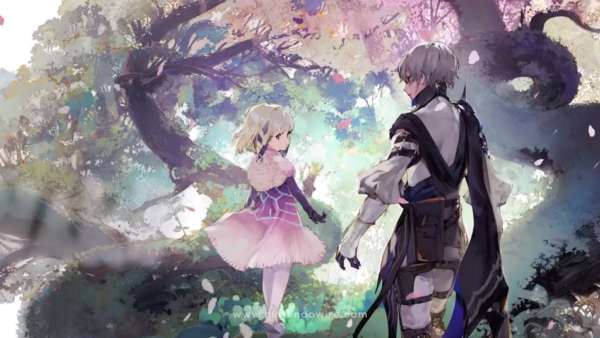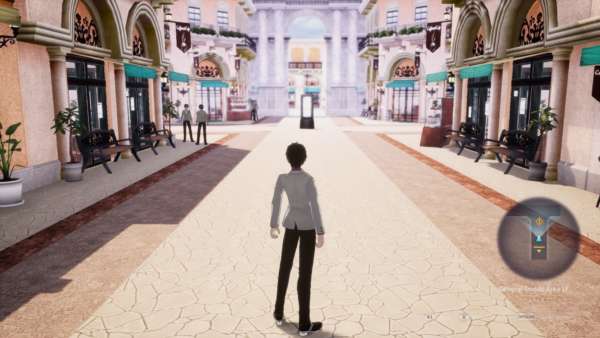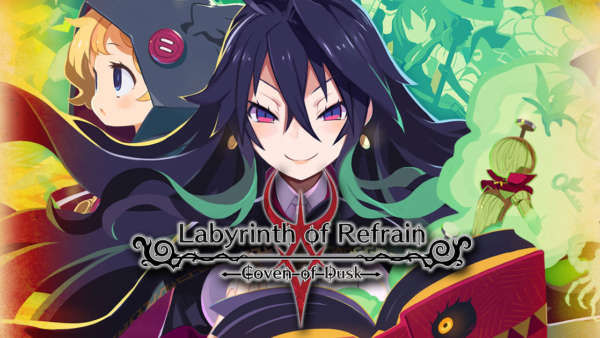We finally got our hands on the full version of Tales of Hearts R and we are ready to see if the full game creates a greater impression than the preview did. Is it going to be a tale to remember or is it a heartbreaker?
As mentioned in our preview, the story of Hearts R is very simple. Young boy gets his mystical weapon, meets mysterious girl who is on the run from some big bad villain, an inciting incident scatters a magical trinket across the world and it is up to our heroes to go collect this pieces and restore order. If you’ve seen played any Tales game or seen any popular sci-fi or fantasy film in the last 30 years, you know exactly what is going to happen over the course of the story. You can see the second act twist after our heroes collect the magical trinket as soon as the game starts, making this tale feel like you are just treading old ground rather than experiencing a fresh new quest.
Even though the story is as hackneyed as they come, the main cast does have some standout characters which does make the journey have its highlights. Gall, the wise old man who speaks like he is straight out of Grease is bound to cause a few laughs and the smiling bruiser Ines has great chemistry with the core cast, leading to some great skits and victory dialogue as you travel across the land of Celland. Unfortunately, the main character of the game, Kor, is the rotten core of your party. He is a mix of all the worst aspects of previous Tales’ protagonists, to create a hero who is unlikable, completely stupid, petulant and not at all sympathetic. He has no real chemistry with any of the other cast and is insufferable throughout the whole adventure. The predictable romance between him and Kohaku feels forced and unnatural and he makes completely asinine decisions throughout the whole adventure, making you want to bludgeon him to death with his own Soma. So while the supporting party members may make the clichéd story somewhat enjoyable, Kor will always seem to hamper the experience.

You’ll be crying tears of sadness as you suffer through some of the bizarre dialogue.
The game’s lacklustre story is not aided by its poor localisation. Besides the questionable changes to the protagonist’s name, the game is rife with spelling errors, mistranslations and odd vocabulary choices. Characters like Gall seem to forget verbal ticks like his 50s inspired lingo, just to pick it up again in a later cutscene while other character make jokes which are completely out of character or don’t fit the tone of the scene at all. Single words in Japanese are translated as complete paragraphs in English or given curious translations, like the word ‘hentai’ being swapped for ‘rapscallion’ in one scene near the beginning
As for spelling errors, Beryl’s dialogue is the prime offender, being full of spelling mistakes and grammatical errors. While some words seem like they are being misspelt for comic effect, like ‘hoodwinked’ being spelt as ‘woodhinked’, it is hard to tell how many of these are intentional or the product of a lazy localisation team. Characters complaining of ‘explodation’ instead of ‘exploitation’ or ‘wicket’ men instead of ‘wicked’ men make this effort to release the game in the West like an incredibly rushed endeavour. It even extends to text in battle as the bar which tells you the time left until you can use an item is labelled as ‘Using Item’, which is the complete opposite of what is actually happening.
This could be overlooked somewhat if Tales of Hearts R had an English dub but it doesn’t, making players reliant on the game’s subtitles to make sense of the dialogue. It seems that the game may have been planned to have an English voicetrack, based on the wording of some scenes but sometime during development, the plug was pulled and the decision to use only subtitles was made instead. Again, this makes the game seem incredibly sloppy when played and just makes it seem like the whole process of localisation was rushed just to get the game to ship on time. If the game had a toggleable voice track, this issue would be tolerable but in this case, this poor localisation is something that cannot be overlooked.

The combo attacks you can perform are both powerful and well animated.
Fortunately, Hearts R’s battle system doesn’t let the side down, being the best handheld version of Tales combat ever. While I had initial doubts about the Technical Counter (which works like the CC Gauge in Graces f which limits the number of consecutive artes you can perform), it actually meshes well with the game’s usual TP system and allows players to slowly get used to the battle system on a handheld before launching you into the real meat of the combat. While the core combat is similar to any 3D Tales game, containing the usual mix of normal attacks, Artes and various movement options, the big new feature of Hearts R is the Chase Link system, which allows players to extend combos into the air and quickly whip around the battlefield to take out weakened enemies.
By doing a certain amount of damage to an enemy, a blue circle will appear around them which will allow you to knock them up into the air and start the Chase Link. In this mode, you can quickly teleport to enemies that have been knocked up and continue attacking them in the air. You can also tap on a party member’s portrait to perform a Chase Cross attack for high damage or hold down the attack button to do a finishing move. When you throw in Union Artes for special character pairs and character-specific Mystic Artes (called Combination Blasters), you have a great emulation of the console Tales’ experience on handheld and a thoroughly enjoyable battle system. The Soma Build system is also a great take on character levelling, allowing players to spec characters in a specific stat or path to suit their playstyle, which is a nice layer of customisation. You can build your Hisui to be a dedicated healer or your Ines to be a tank, with players being rewarded with combination skills, new weapons and artes for building certain combinations of stats, which is a great way to award players for pursuing a specific build type.
However, the game’s dungeon layout and encounter system is lacking when compared to the polish of the battle system. Dungeons are nothing more than linear pathways with the occasional branching path to grab a chest. There is some very light puzzle solving, which usually involves a block puzzle or players turning switches on and off with the Sorcerer’s Ring but these puzzles lack any real challenge and are just there to length the time spent in a dungeon, rather than providing a distinct challenge. Also, probably due to the limitations of the Vita, random encounters are back which is an annoyance you have to adjust to, after previous Tales games allowed you to avoid encounters all together as long as you were able to dodge the monsters roaming around.

Oh boy! More samey green plains! What great variation!
Presentation wise, Tales of Hearts R is incredibly forgettable. The world of Celland lacks any personality, being comprised of boring green plains, the occasional forest and towns so drab and lifeless, that they could be from any JRPG ever. It takes you 5 hours to reach a big city and even then, the city is so bare and lacking in detail that it blends into the homogenous mess of a world which the game is set in. As for the character designs, they look so out of place compared to the plain looking townsfolk that you automatically know if a character is going to be important based on if they have any colour on their clothing. The game’s music does not buck the trend of being completely forgettable, with the battle theme only standing out due to how irritating it is.




